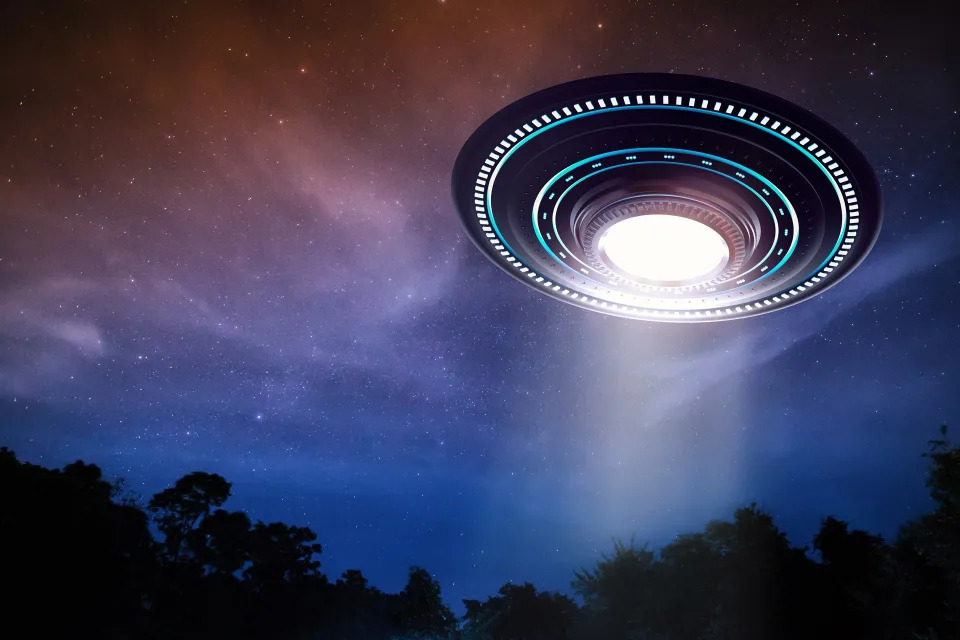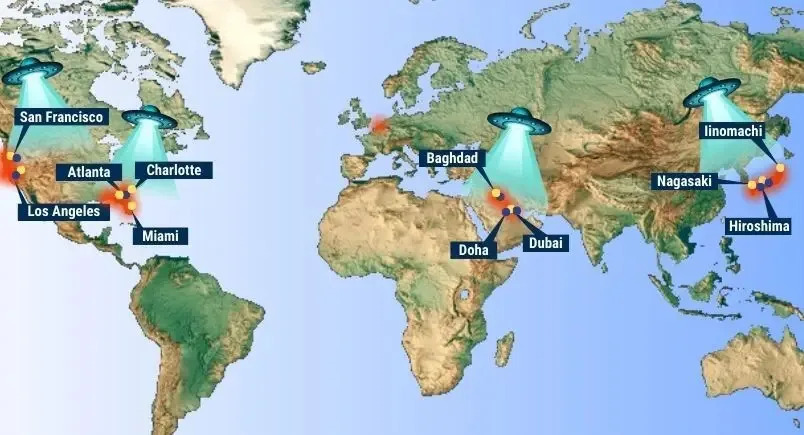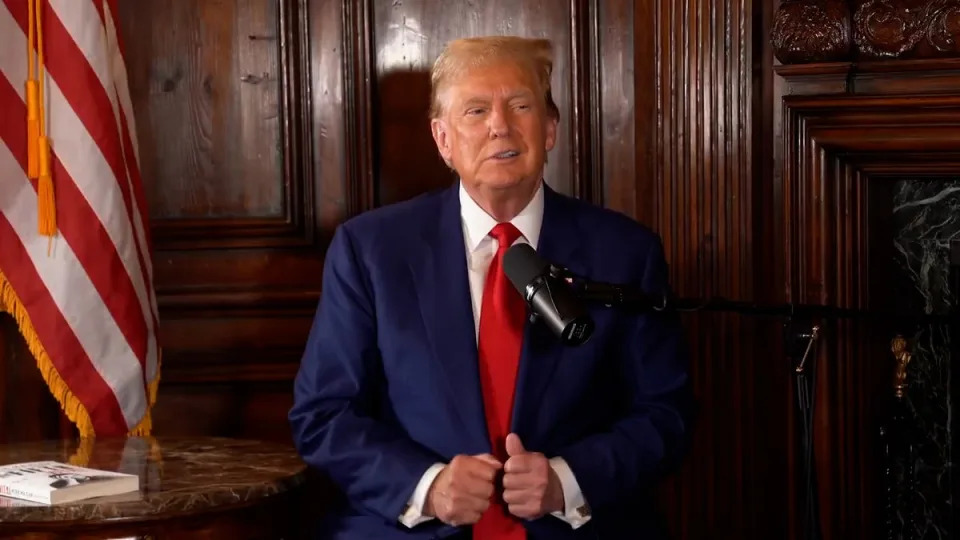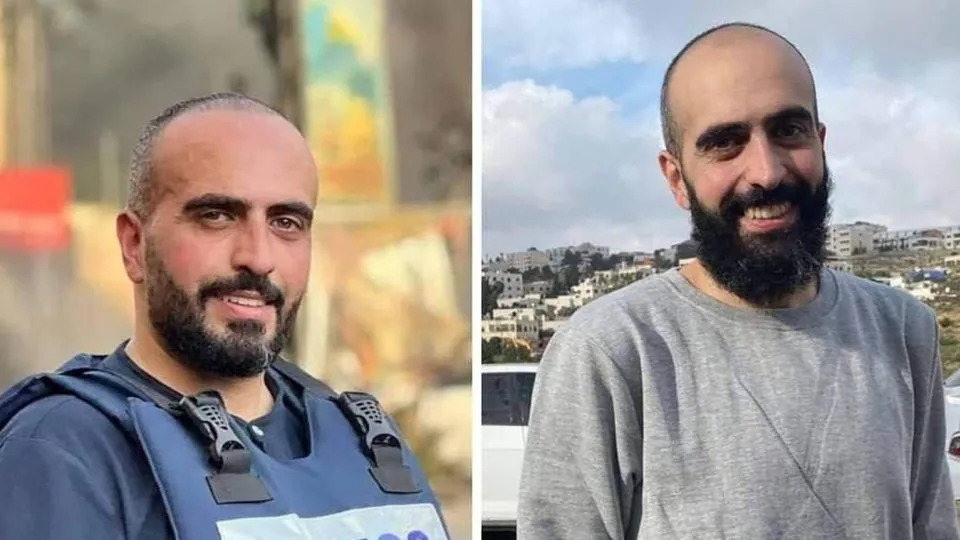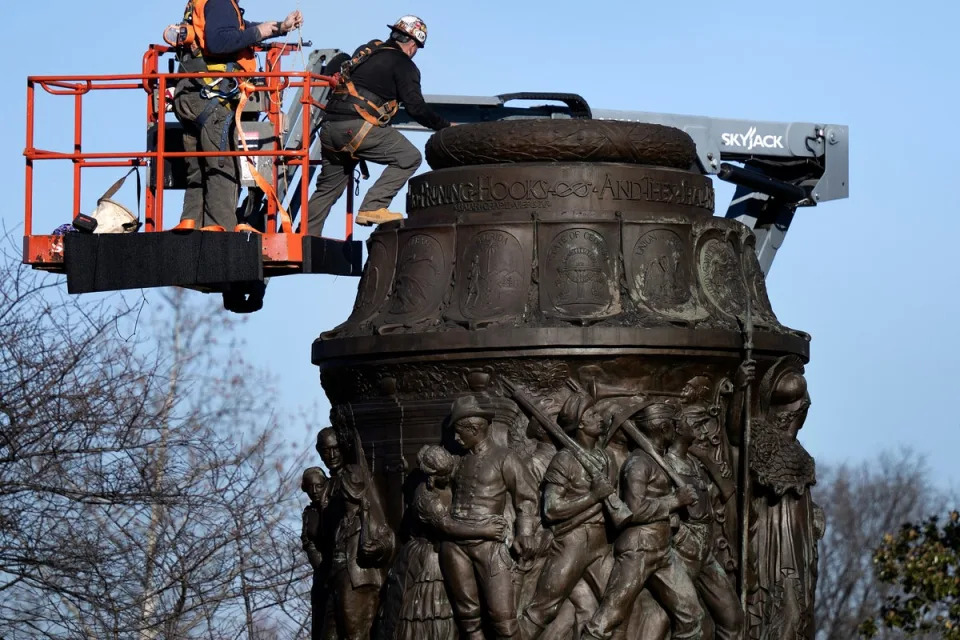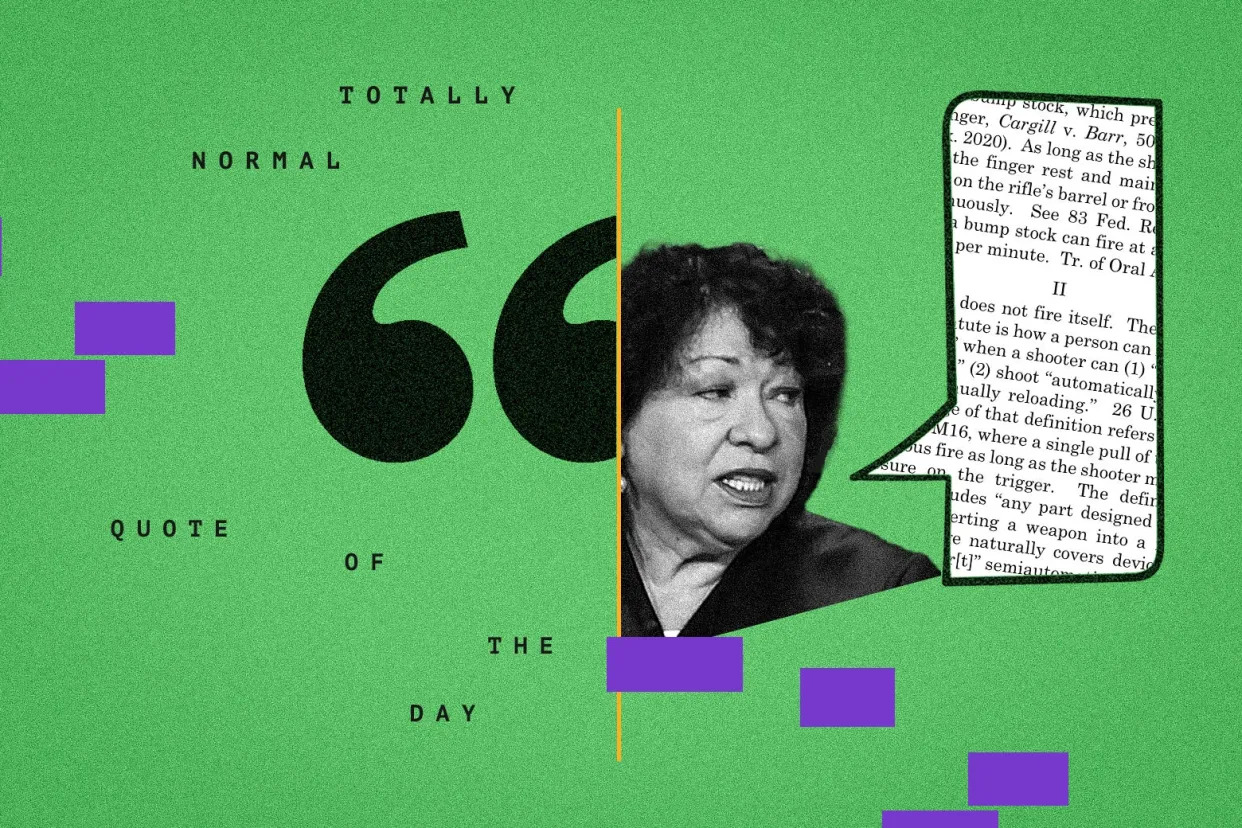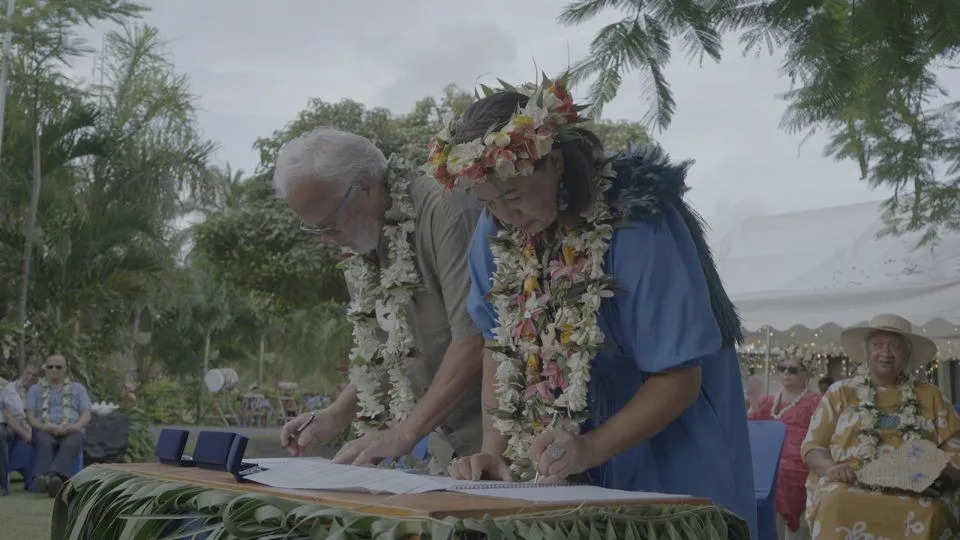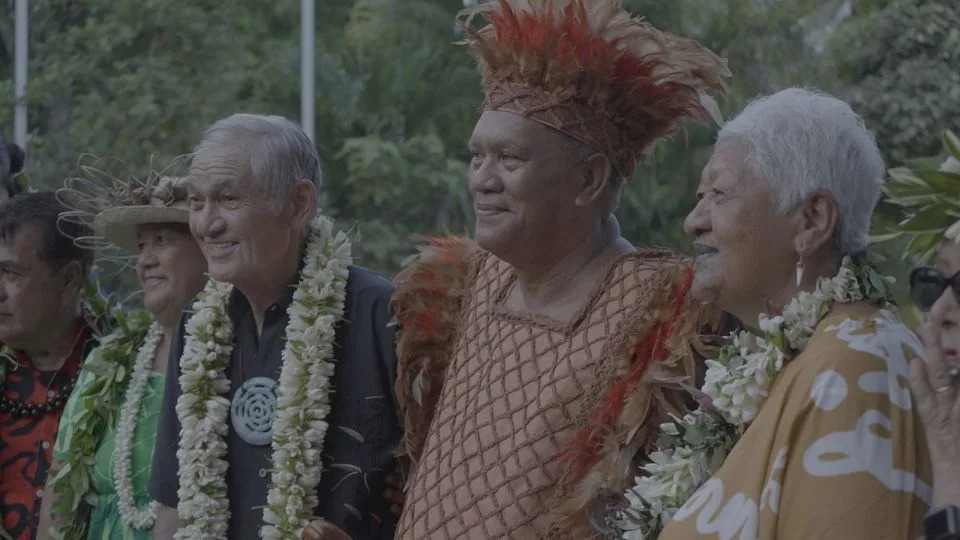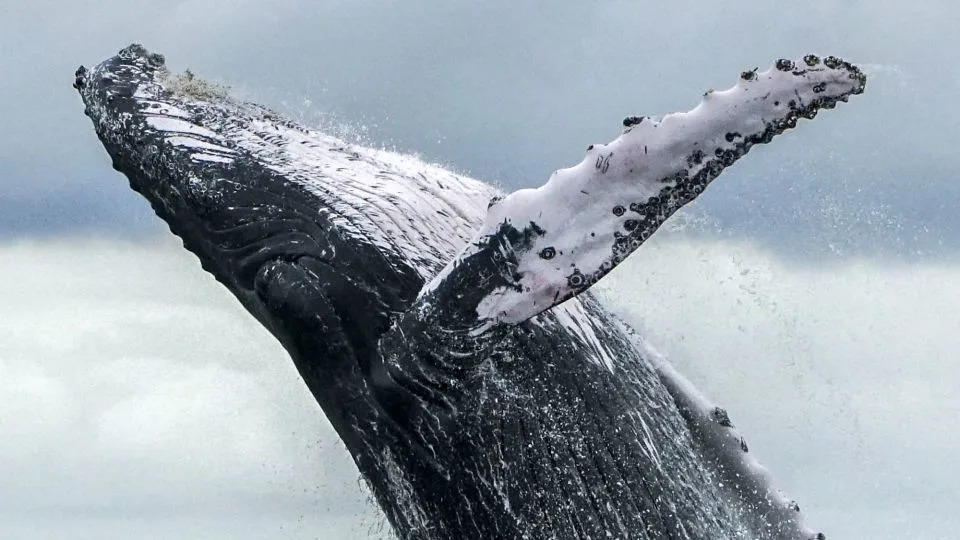Lewis Kamb
Fri, June 14, 2024
She hadn’t quite turned 19 and had just started college when Hana Hooper found out she was dying.
An echocardiogram revealed the telltale signs in grayscale images of an enlarged heart chamber, its walls stretched thin. Her diagnosis — end-stage dilated cardiomyopathy — sounded complicated. But in simple terms, it meant that Hana needed a new heart, and fast.
To survive long enough to get one, she first needed what’s sometimes called “bridge to transplant” surgery — a procedure to place a device in the left ventricle of her failing heart to help it keep pumping.

Hana Hooper had just started college when she was diagnosed with a fatal condition that forced her to seek a heart transplant. (Polly Schaps / Courtesy American Heart Association)
Her worried parents, Ali and Patrick Hooper, sought to buy time for Hana, the middle of three daughters they raised near Seattle, by arranging for her to have the surgery at one of the most prestigious and largest public hospitals in their home state: the University of Washington Medical Center.
But shortly after an esteemed cardiac surgeon, Dr. Nahush Mokadam, performed the procedure in January 2017, it became clear something had gone wrong. Hana suffered a stroke, slipped into a semi-coma and lost her sight.
Her parents later alleged in a lawsuit that Mokadam had used an unconventional surgical technique that put Hana at higher risk for stroke without telling them in advance.
They claimed that, to cover up his wrongdoing, the doctor blamed the surgery’s problems on an unexpectedly “significant amount of plaque” he encountered in Hana’s aorta and removed her from a transplant eligibility list because of it. When the family wanted a second opinion, Mokadam threatened to tell other transplant programs Hana wasn’t suitable for a new heart, they said.
“Dr. Mokadam lied about his operative findings and sought to prevent Hana from obtaining a life-saving” heart transplant, Hana and her parents asserted in a legal notice that preceded the suit.
Mokadam referred questions about the case to his lawyer, who declined to comment.
The allegations of alarming misconduct in the notice and suit have never made headlines— and the university hoped they never would.
After more than two years, the case was settled in March 2023 with a $12 million payment and neither Mokadam or the university admitting wrongdoing. But the university did include a confidentiality clause — also known as an NDA — a legal tool widely used by major corporations and wealthy celebrities to make accusations go away. In this case, the agreement instructed the Hoopers “not to publicize the names or identities of the defendants” with “any description of their conduct.”
Nondisclosure agreements can keep sensitive details out of the public eye, but they have come under attack in recent years for shielding bad actors and allowing misconduct to persist. Critics say they allow prominent people to keep sexual assault allegations under wraps, for instance, and businesses to silence would-be whistleblowers. But there’s been little focus on the persistent use of NDAs to conceal allegations of wrongdoing at taxpayer-funded institutions, including public hospitals.
While using confidentiality to hide allegations of malpractice is widespread, lawyers and scholars particularly question the use of NDAs at public hospitals, since they receive tax dollars and are subject to transparency laws.
“The information they’re hiding is publicly available, so confidentiality is just a barrier they’ve set up for victims,” said Paul Luvera, a now-retired trial lawyer in Washington state who opposes the routine use of NDAs. “It’s an intimidation clause.”
In 70 of the 89 settlement agreements negotiated for the University of Washington Medical Center and other UW-affiliated hospitals and clinics from 2015 to early 2023 and obtained through public records requests by NBC News, the university included confidentiality clauses that require victims and their families to keep silent about their claims, the amounts they were paid, or both, as a condition of settlement.
As a result, the public has been kept in the dark about allegations of egregious medical mistakes and serious misconduct at Washington’s largest taxpayer-funded hospital system. Payments to settle cases that included confidentiality requirements ranged from as low as $2,000 to as high as $14 million.
Copies of the settlement agreements reviewed for this article, including those that drew some of the largest payments, show the university required secrecy in cases that alleged grave harm:
A newborn who suffered severe brain damage because doctors allegedly failed to properly monitor his heart rate during childbirth ($14 million).
A man who died after doctors allegedly misdiagnosed and improperly treated a cancerous mass in his face and neck ($6 million).
A girl left with permanent cognitive disabilities after a doctor who operated on her face allegedly left bone fragments behind in her skull, causing a catastrophic stroke ($11 million).
A spokesperson for UW Medicine, Susan Gregg, said that the accusations leading to such confidential settlements “may not be factually accurate.”
“Like many health care organizations, including publicly owned organizations, UW asks for confidentiality in order to achieve finality and certainty when a claim concludes,” Gregg said in a statement.
“Confidentiality clauses are a standard industry practice.”
Law firms hired to defend the university are generally instructed in their contracts that settlements “must include” confidentiality. In its NDAs, the university usually presents the agreements to claimants as “mutual promises” of confidentiality, but also typically includes the phrase “will make reasonable efforts” about its own vow to keep the agreement quiet.
That’s because, in some states, government-run hospitals that are subject to public records laws cannot legally withhold many of the key details they require their accusers to keep secret — and they know it.
Several families who settled claims with the University of Washington told NBC News that they weren’t aware that if an outside party requested settlement agreements, the university couldn’t keep them secret. One claimant, Ruby Blondell, said it felt like the university “wasn’t being completely honest.”
“I was taken aback — should we say slightly shocked — to know that we had signed a nondisclosure agreement and we weren’t allowed to talk, but the information was there for the finding for you,” said Blondell, a retired UW professor whose husband, Douglas Roach, died of cancer after alleging in a lawsuit that university doctors failed to tell him about a critical lesion spotted in his lungs. “It was borderline creepy to see that document in your hands with my signature on it,” she said.
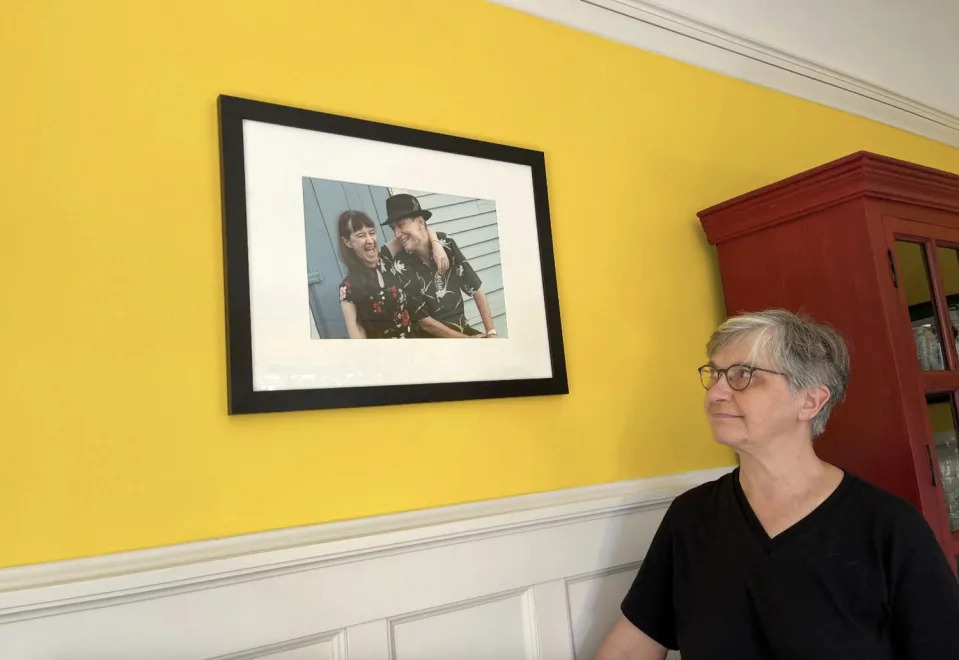
Ruby Blondell looks at a photo of herself with her late husband, Douglas Roach, taken before they were married in 2004. “He was very upset that we weren't going to have the life together we’d planned,” she said. (Lewis Kamb / NBC News)
Other hospitals around the country subject to public records laws regularly employ the same secrecy tactics to keep malpractice cases hidden, documents obtained through public records requests show.
The University of Kansas Hospital Authority required confidentiality in settlements with families of two men who claimed that their loved ones died after contracting bacterial infections due to a faulty medical device used during open-heart surgeries. A spokesperson for the hospital system did not respond to specific questions about the cases but said it had “robust processes and systems in place to address the small number of situations where harm occurs while providing needed care.”
The University of Texas-MD Anderson Cancer Center used an NDA to settle a 2019 claim alleging that doctors had removed part of a woman’s brain after mistaking it for what one of them called a “baseball-sized” tumor, the woman claimed, leaving her permanently brain damaged. Doctors at a different hospital later diagnosed her with a rare but treatable form of multiple sclerosis that causes brain lesions, her claim states. MD Anderson declined comment about the case; the doctors involved didn’t respond to requests for comment.
NDAs can also limit accountability by stifling the regulatory complaints and publicity that prompt investigations, NBC News found.
Some patients wrongly assume that after they file a malpractice claim, their allegations will always be investigated by an outside state regulator. Others may believe that the NDA means they can’t file their own regulatory complaints. None of the settlements reviewed addressed the issue directly.
Public licensing records in Washington show no enforcement actions have been taken against Mokadam, who left the university in 2018 about three months before Hana managed to get a heart transplant at the Cedars Sinai Medical Center in Los Angeles.
Mokadam is one of at least six former UW doctors to leave the university for jobs in other states since 2015 within roughly a year of facing malpractice claims, lawsuits or settlements, records show. Asked about this finding, the university’s Gregg said there was “no way to know the motivation” for why a particular doctor might leave his or her job.
Mokadam now works as cardiac division director at Ohio State University’s Wexner Medical Center. A spokesperson for Ohio State declined to specifically comment about the case but said the hospital system adheres to a strict review process when hiring doctors.
Under Washington state law, hospitals are required to submit reports to the state medical commission within 60 days any time they make a payment over $20,000 to settle a claim alleging damages caused by an identified doctor’s negligence. The National Practitioners Data Bank, a federal repository of malpractice and disciplinary records, separately requires such a report within 30 days, regardless of payment amount. Gregg said the university submitted one report for Mokadam — nearly three months after the 2023 settlement — to the Data Bank and requested a copy be forwarded to the commission. The university “doesn’t need to duplicate the reporting,” she said.
But the commission said it never received the report. When pressed by NBC News, it later discovered the Data Bank had sent its copy to a state health department office that did not share it. Without the report, the commission knew nothing of Hooper’s malpractice claims against Mokadam — and never investigated them.
Spokespersons for the commission and health department each said the law clearly requires hospitals to send reports directly to the commission. The commission said it is now looking into the Hoopers’ allegations against Mokadam.
Gregg separately said that Hana’s care was “reviewed under the UW Medicine quality improvement program,” but declined to say more about what she called a “confidential process.”
And then there are the NDAs, which gag patients and their families.
When asked recently if her family would discuss Hana’s case, Ali Hooper checked with her lawyer and declined the offer. “We’re totally bound by the settlement agreement and don’t want to do anything to jeopardize her situation,” she said.
Several others who settled malpractice claims against the university that included confidentiality requirements declined to talk with NBC News, expressing concerns about potential legal consequences.
But Susanna Grieser and her husband, Mark, opted to break their silence, saying they feel it’s their civic duty to speak out.
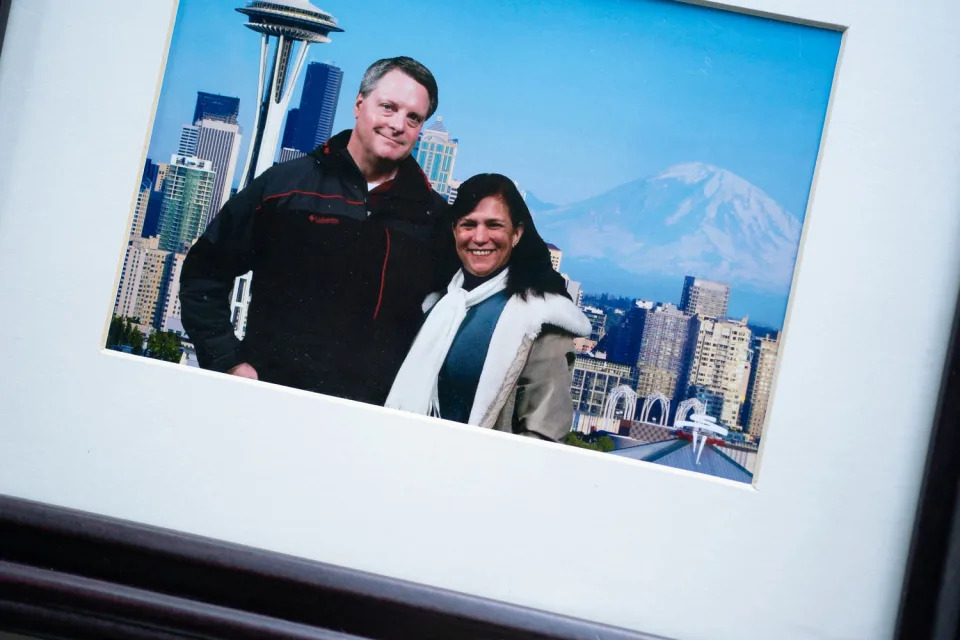
Susanna Grieser, right, and her husband, Mark, before her 2016 dental surgery. (Margaret Albaugh for NBC News)
In November 2016, Susanna, who had emigrated from Venezuela two years before, went to the UW School of Dentistry to get a broken tooth removed.
A student dentist convinced her after X-rays that she also needed a right molar pulled, assuring Susanna the procedure would be “easy,” she said.
But during surgery, the student and an older male faculty dentist who accompanied him struggled to remove the molar, said Susanna, 60. After the student dentist finally got the tooth out, Susanna, who was partially sedated, could feel the force of his weight pressing into her face as he jammed bone graft material into her exposed tooth socket, she said.
When she finally emerged from surgery more than three hours later, Susanna was still groggy and numb, but “knew something was wrong immediately,” she said.
Over the next few months, Susanna said she suffered constant, debilitating pain, according to her medical records and a state health department investigation. She avoided opening her mouth or touching her face, records show. She hardly spoke, ate only mashed foods, rarely slept and routinely missed work. She also fantasized about driving into oncoming traffic and off a bridge, the records show.
“The pain was so bad,” she said in an interview, “I almost killed myself.”
When she returned to the clinic for help, one faculty dentist referred Susanna to another, who referred her to another. They prescribed her medication but told her they could not explain what caused her pain. One dentist prescribed her medication that resulted in convulsions, the records show.
All the while, they added, the university was badgering the couple, who were uninsured, over their bills.

Susanna Greiser becomes emotional (Margaret Albaugh for NBC News)
In June 2017, Susanna was sent to Dr. Jansjit Dillon, an oral surgeon at UW-run Harborview Medical Center. Dillon took X-rays revealing that beneath the bone-grafted socket, a major nerve in Susanna’s jaw had been partially obliterated, the dentist's notes summarizing the visit say.
A few weeks later, Dillon transplanted a new nerve into Susanna’s mouth. The university later billed the Griesers more than $70,000 for the surgery, records show.
The details above were recounted to investigators as part of the state probe spurred by her husband Mark’s complaints. Dillon told an investigator that the university dentists’ failure to suction out bone graft material was “a medical error,” and if they had done so earlier Susanna’s nerve could have been saved, a report of the investigation found.
None of the dentists who treated Susanna were fined or disciplined by the state, licensing records show. At least one denied wrongdoing to investigators, according to records. The student, now a practicing dentist, declined to comment to NBC News, citing patient confidentiality. The male faculty dentist who oversaw him was never publicly identified; the student’s supervisor of record did not respond to requests for comment, nor did the other dentists involved.
Gregg said the university cooperated with the state investigation and that Susanna’s care was reviewed separately under “the UW School of Dentistry’s quality improvement program.” She said she couldn’t provide further details about that confidential review.
Scott Bramhall, one of the investigators, declined to comment on the case, but said state regulators generally have no authority over unlicensed students.
After the Griesers filed a notice of claim preceding their suit in 2018, the university eventually paid them $600,000 and forgave some bills, they said.
Confidentiality only came up after the deal was struck — when the couple saw a clause in their settlement document. Though he ultimately signed it, Mark said he objected to its inclusion.
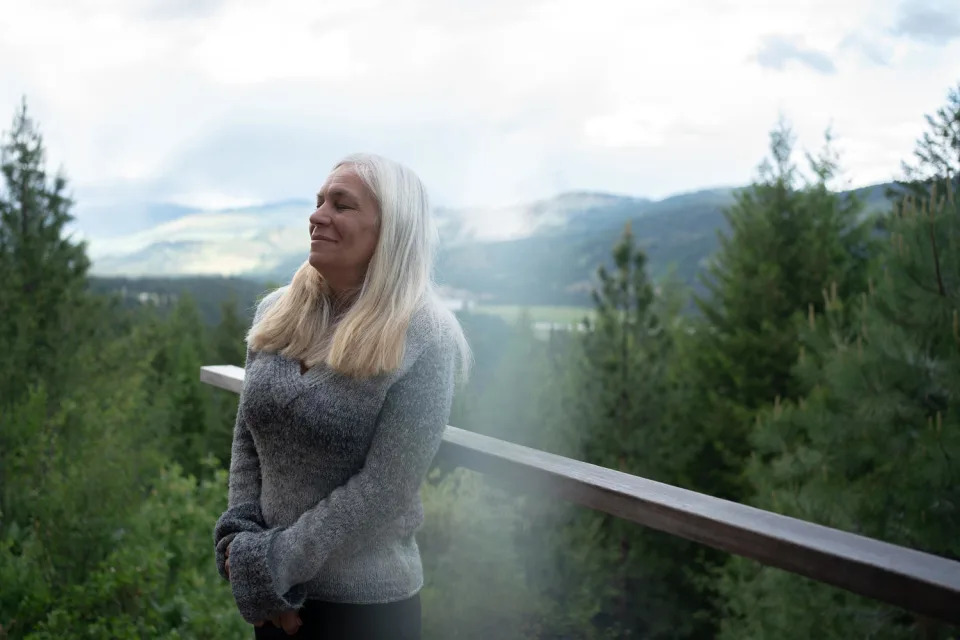
Susanna Grieser outside amongst trees at her home. (Margaret Albaugh for NBC News)
“My firm belief is that I have a duty as a citizen to speak out about this to protect my fellow citizens,” said Mark, 66, a semi-retired accountant.
“I’m not afraid to speak up,” said Susanna. “I don’t want this to happen to anybody else.”
In an email, Daniel Whitmore, the couple’s attorney, declined to discuss the case, saying: “I am bound by the confidentiality agreement that I signed.”
Not every lawyer agrees to such constraints. Luvera, the retired attorney from Washington state, rarely allowed himself or his clients to be bound by confidentiality.
For most of his 55-year legal career, Luvera made it a policy to refuse to agree to any form of confidentiality as a requirement of settlement. He resisted NDAs muzzling his clients in personal injury settlements with, among others, the tobacco industry, corporate gunmakers, medical device manufacturers — and public hospitals.
“Keeping secrets just perpetuates more harmful conduct to innocent victims,” he said.
Luvera, whose stance made his firm an outlier, informed prospective clients up front that he’d never agree to an NDA if they hired him. But after a settlement, Luvera said he'd only publicize the results of a case if his clients wanted to go public. “It was always the client’s choice,” he said. “Secrecy was never dictated by the defendant who’d harmed them.”
Examples of secret settlements perpetuating harm are rife in cases involving private corporations and individuals, from Purdue Pharma’s pervasive pushing of oxycontin to Harvey Weinstein’s rampant sexual abuse. But the use of NDAs by taxpayer-funded hospitals to hide allegations of wrongdoing is insidious in a different way, Luvera said, because such public institutions are subject to open records laws.
Patrick Malone, a Washington, D.C.-based lawyer who has written extensively about the legal ethics of using NDAs, reviewed the university’s boilerplate confidentiality clause and said, in his opinion, it violates model ethics rules that encourage transparency in claims and defenses.
“There are a number of jurisdictions that have said it’s unethical for a lawyer to hide, under the guise of confidentiality, any of the public facts of a case,” Malone said.
Several local and state bar associations have adopted advisory opinions or rules against lawyers using NDAs and a handful of state laws forbid them under certain circumstances. California prohibits NDAs in sexual abuse settlements. Florida bans “concealing information” in settlements of claims “against the state,” including malpractice cases at public hospitals. And a law passed 30 years ago in Washington state outlaws confidentiality agreements if they keep secret “hazards to the public” — but it doesn’t specify medical malpractice.
“The reality is that unless there’s specific legislation that mandates openness and prevents secrecy, then there’s going to be secret settlements and protective orders that prevent the public from knowing there’s a physician with repeated mistakes or a hospital with repeated failures,” said Richard Zitrin, a University of California-San Francisco law professor who has helped draft anti-secrecy legislation for decades.
Despite the lack of a law in Washington state explicitly banning the use of NDAs in medical malpractice settlements or by public institutions, five lawyers who’ve settled cases with the university in recent years told NBC News they are doubtful that it can enforce its confidentiality requirements.
Joel Cunningham spent 20 years defending the university and other public hospitals before switching sides and joining Luvera’s firm to specialize in suing them. He always included confidentiality in medical malpractice settlements when he defended doctors and hospitals, he said, but “never understood how public hospitals could really enforce these agreements.”
Gregg, the university spokesperson, said it was “not aware of any medical malpractice settlement where the plaintiff breached confidentiality” but “knows of no authority” that has deemed NDAs “generally unenforceable or unethical.”
Most of the plaintiff attorneys interviewed said they disliked NDAs, but several said they sometimes agree to confidentiality with the university if they believe it’s in their client’s best interest or if the client wants to keep certain details private, such as the settlement amount.
“Personally, I don’t believe nondisclosure agreements are good for society,” Mike Wampold, an attorney in Seattle, said. “But I’m not a legislator making public policy. I’m a lawyer representing an individual client.”
He’s never heard of the university coming after someone for breaching confidentiality, but Wampold said if a client were asked to speak about a case with an NDA, he’d likely advise them not to, or at the least “very carefully monitor that conversation.”
And that’s what Wampold did when Ruby Blondell decided to talk to NBC News.
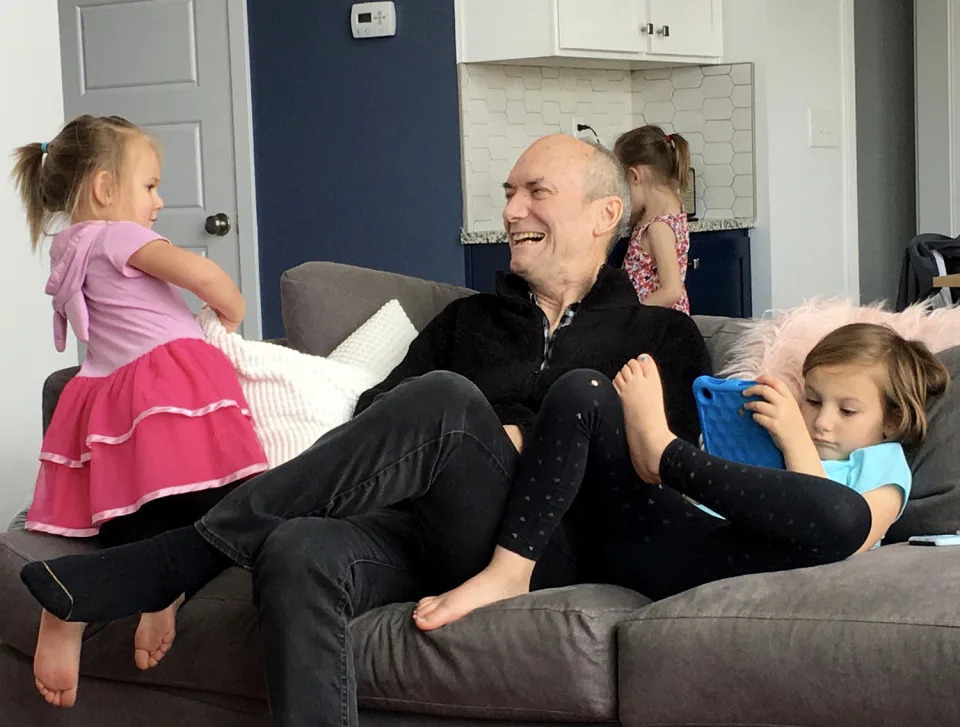
Douglas Roach plays with his grandchildren after he was diagnosed with lung cancer in 2017. (Courtesy Ruby Blondell)
Blondell recently recounted how, after her husband, Douglas Roach, learned he had stage 4 lung cancer in 2017 and faced certain death, he pored over all his UW medical records.
“He was an attorney, and his immediate reaction was, ‘Whose fault is it?” said Blondell, 69, a retired UW classics professor. He soon found the explanation he was looking for, she said.
With her lawyer, Wampold, monitoring her interview with NBC News, Blondell was careful not to elaborate much more about the medical malpractice lawsuit, so as not to violate a confidentiality clause in the couple’s settlement.
But the lawsuit lays out what she and her husband alleged happened. Roach had sought treatment from the University of Washington Medical Center in 2012 after injuring himself in a fall, the lawsuit states. After a radiologist ran a CT scan of his chest that revealed a suspicious lesion in his lungs, that physician “flagged the report as ‘critical.’”
“This critical finding was not communicated to Mr. Roach or his primary care physician, nor was it followed up on by his doctors at UWMC,” the lawsuit states.
Roach would only learn about it five years later, when he went to the emergency room “complaining of cough and chest pressure.” It was too late — doctors diagnosed him a short time later with terminal cancer, the suit states.
Blondell said her husband pursued the lawsuit as an act of love — to ensure she’d be financially secure after he died.
“We couldn’t afford our house without his income,” she said. “And Douglas loved this house.”
The university settled the case for $5 million without admitting wrongdoing in October 2018 — nearly two years to the day before Roach died at 62.
It’s one of at least four malpractice settlements over $1 million reviewed by NBC News that stemmed from allegations of misdiagnosed or mistreated cancers, three of which were blamed for deaths and one for disfigurement, records show. All four settlements included confidentiality clauses.
Blondell didn’t mind that the settlement amount wasn’t public, but worried that the incident would be “swept under the rug.”
Still, she didn’t think she could do anything about that. “I just always heard that these kinds of things usually did come with a confidentiality agreement,” she said. “I just thought it was par for the course.”
The NDA kept the settlement out of the headlines, Wampold noted. But Blondell interjected: “I probably wouldn’t have minded it being public, if in return we got accountability.”

Hana Hooper, now 26, received a new heart in 2018.
Last month, the American Heart Association honored 26-year-old Hana Hooper as its “National Woman of Impact” — the charity’s top volunteer for a national fundraising and awareness campaign to combat heart disease in women.
Before Hooper’s latest triumph, her mother gushed with pride in a Facebook post, noting that Hana “fought to overcome” the challenges she’s faced from her stroke, blindness and heart transplant.
“She went from unable to move, talk or walk, to throwing pottery, rock climbing, skiing and so much more,” she wrote.
But Hana faced additional obstacles that her mother cannot publicly share in social media posts under the NDA.
After Mokadam removed Hana from the transplant list, her lawsuit says, a different UW heart surgeon, Daniel Fishbein, rejected his colleague’s assertion that excessive plaque in Hana’s main cardiac artery made her ineligible for a transplant. He arranged for Hana to get second opinions at two out-of-state hospitals. Both relisted Hana as a top priority for transplant. She got her new heart in 2018, court records say.
“I am grateful to be alive today,” Hana said in a press release about her award.
Since leaving Washington for Ohio State University in 2018, just three months before Hana’s successful transplant, Mokadam has had reason to be grateful, too. His latest role as a full-tenured professor and heart surgeon now earns him more than $1 million annually — over $400,000 more than what he earned in his last full year at the University of Washington, records show.
Shortly after taking his prominent new role, Mokadam introduced himself to the Ohio State community in a video posted online. What drew him to his work, he said, was “the ability to help people at the moment when they needed it the most.”
This article was originally published on NBCNews.com

